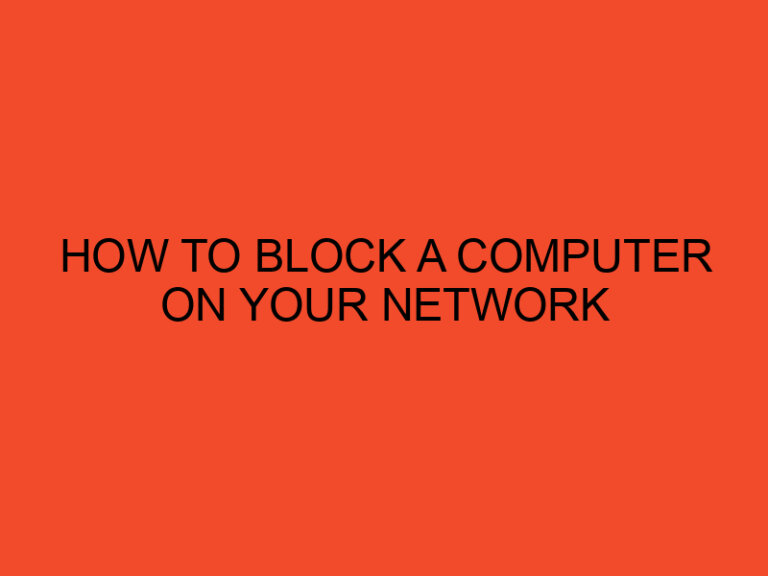When building or upgrading a computer system, one of the crucial steps is the installation of the motherboard and connecting power. The motherboard serves as the central hub, connecting all the components and enabling them to work together seamlessly. Proper installation and power connection are vital to ensure the system functions correctly. In this article, we will explore the correct procedures and best practices for installing the motherboard and connecting power.
Table of Contents
- Importance of Proper Motherboard Installation
- Preparing for Motherboard Installation
- Installing the Motherboard
- Connecting Power to the Motherboard
- Conclusion
- Frequently Asked Questions (FAQs)
- Can I reuse the motherboard standoffs from my old case?
- Should I connect all the available power cables to the motherboard?
- What should I do if the motherboard does not power on after installation?
- Can I install the motherboard without removing the CPU cooler?
- Do I need to apply thermal paste before installing the CPU?
Importance of Proper Motherboard Installation
The motherboard is the foundation of any computer system. It houses the CPU, RAM, storage devices, and other essential components. The proper installation of the motherboard ensures that all the components are securely connected and aligned, preventing any potential damage or performance issues. Moreover, correct installation allows for efficient communication between the various components, optimizing the system’s overall performance.
Preparing for Motherboard Installation
Before proceeding with the motherboard installation, it is essential to take a few preparatory steps. Here’s what you need to do:
1. Gather the necessary tools and components
Ensure that you have all the required tools and components at hand. This includes the motherboard itself, the CPU, RAM modules, storage devices, power supply unit (PSU), and any other expansion cards or peripherals you plan to install.
2. Read the motherboard manual
Every motherboard comes with a detailed manual that provides instructions specific to that model. Take the time to read through the manual thoroughly. Familiarize yourself with the layout of the motherboard and the location of various connectors and slots.
3. Choose a suitable workspace
Find a clean, well-lit workspace where you can comfortably work on the installation. Make sure you have enough space to spread out all the components and tools without any risk of static electricity or accidental damage.
4. Take anti-static precautions
Static electricity can damage sensitive electronic components. To prevent static discharge, use an anti-static wrist strap or periodically touch a grounded metal object while handling the components. Additionally, work on a non-static surface like a wooden table or an anti-static mat.
Installing the Motherboard
Once you have completed the preparatory steps, you can proceed with the motherboard installation. Follow these steps:
1. Prepare the case
Open the computer case by removing the side panel(s). Carefully inspect the inside of the case for any loose screws or debris. Remove any standoffs or screws that do not align with the motherboard’s mounting holes, as they may cause a short circuit.
2. Install the I/O shield
The I/O shield is a metal plate that fits into the rectangular opening at the back of the case. Align the I/O shield with the openings for the motherboard’s ports and firmly press it into place.
3. Align and secure the motherboard
Carefully align the screw holes on the motherboard with the standoffs in the case. Once aligned, insert screws into the standoffs and tighten them securely, but avoid overtightening, as it may damage the motherboard. Ensure that the motherboard is seated evenly and does not flex.
4. Connect the front panel connectors
Refer to the motherboard manual to identify the location and pin configuration of the front panel connectors. Connect the power switch, reset switch, HDD LED, power LED, and other front panel connectors to their respective pins on the motherboard. Be gentle when handling the connectors to avoid bending or damaging the pins.
5. Install the CPU, RAM, and other components
Follow the instructions provided in the motherboard manual to install the CPU and RAM modules. Ensure that they are correctly inserted and secured in their respective slots. If you have any expansion cards, such as a graphics card or sound card, install them in the appropriate slots as well.
6. Connect the storage devices
Connect the SATA cables from the storage devices (hard drives or solid-state drives) to the SATA connectors on the motherboard. Ensure a secure connection by pushing the connectors in firmly.
Connecting Power to the Motherboard
Once the motherboard is installed, it’s time to connect the power supply and provide the necessary power for the system to function. Follow these steps:
1. Connect the main power cable
Locate the main power connector on the power supply unit (PSU) and the corresponding ATX power connector on the motherboard. Align the connectors and firmly push them together until they are fully seated. Ensure that the clip on the connector locks into place.
2. Connect the CPU power cable
Modern motherboards often require a separate power connection for the CPU. Locate the CPU power connector on the motherboard and connect the CPU power cable from the PSU to it. Again, ensure a secure connection.
3. Connect the peripheral power cables
Depending on the components you have installed, you may need to connect additional power cables. Graphics cards, for example, often require supplementary power connectors. Consult the component manuals and connect the necessary power cables from the PSU.
4. Double-check all connections
Before powering on the system, double-check all the connections to ensure they are secure and properly aligned. Loose or improperly connected cables can cause various issues, including system instability or failure to boot.
Conclusion
Properly installing the motherboard and connecting power is crucial for the successful operation of a computer system. By following the outlined steps, you can ensure that all components are securely connected, minimizing the risk of damage and maximizing system performance. Remember to refer to the motherboard and component manuals for specific instructions. Take your time and be mindful of static electricity and proper handling techniques.
Frequently Asked Questions (FAQs)
Can I reuse the motherboard standoffs from my old case?
It is recommended to use the standoffs provided with the new case to ensure proper alignment and compatibility.
Should I connect all the available power cables to the motherboard?
No, only connect the power cables required for the installed components. Unused power cables should be neatly tucked away to minimize clutter.
What should I do if the motherboard does not power on after installation?
Double-check all the power connections, ensuring they are securely connected. If the issue persists, consult the motherboard manual or seek assistance from a professional.
Can I install the motherboard without removing the CPU cooler?
It is generally easier to install the motherboard with the CPU cooler removed. However, if the cooler obstructs the mounting holes, you may need to remove it temporarily.
Do I need to apply thermal paste before installing the CPU?
Yes, thermal paste is necessary to ensure proper heat transfer between the CPU and the cooler. Follow the CPU and cooler manufacturer’s instructions for applying thermal paste.





